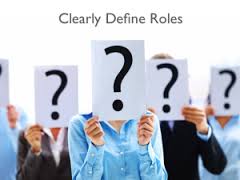 I’ve been doing a lot of “board roles and responsibilities” training sessions in the last year. The curriculum breaks out responsibilities into group obligations and individual duties; however, in both lists there is verbiage such as:
I’ve been doing a lot of “board roles and responsibilities” training sessions in the last year. The curriculum breaks out responsibilities into group obligations and individual duties; however, in both lists there is verbiage such as:
- protect and grow assets
- obtain resources
- makes a personal financial contribution
- seeks charitable gifts from others in their network
There is little question that resource development and fundraising are core responsibilities for non-profit board volunteers.
Of course, understanding this idea is very different from rolling up one’s sleeves and doing it. Right? And the bigger question for me has become:
“Once the roles & responsibilities training is over, how should an agency go about assessing how well the board (as a group) is fulfilling its fundraising responsibilities? Because we won’t know what we need to work on if we don’t know what isn’t working.“
Usually, when I mentally try to cross bridges like this for my clients, I turn to:
- old books and training manuals on the bookshelf in my office
- websites of national non-profit organizations that contain free white papers and videos
- blogs run by thought-leaders in the field
In this instance, I came across a really cool assessment tool located on an intranet website for a large national organization for which I used to work. It was developed with the help of BoardSource, and there were copyright marks all over the document. In other words, I would copy/paste and share it with all of you, but my inner Jiminy Cricket is telling me not to do so. 🙂
 Of course, this doesn’t mean I can’t describe the tool for you, share a little bit (while giving credit where credit is due) and point you in the direction of how you can purchase similar materials.
Of course, this doesn’t mean I can’t describe the tool for you, share a little bit (while giving credit where credit is due) and point you in the direction of how you can purchase similar materials.
The assessment tool is composed of 13 questions, and the user ranks their board on a scale of 1 to 4 for each question. Here are a few of the more interesting questions I found in this tool:
- Are resource development responsibilities and personal giving included in the board member expectation agreement?
- Do all or almost all board members make a yearly personal “stretch” gift to the agency’s annual fund?
- Does the board president personally solicit board members annually to ensure appropriate board giving? Does the board president take time to personally cultivate and steward appropriate higher level prospects and donors?
- Does the executive director take time to personally cultivate and steward appropriate higher level prospects and donors?
- Beyond just reciting the agency’s mission statement, can at least 80 percent of board members convincingly articulate the case for support of the organization?
Did I do a good job of whetting your appetite?
If so, then there is more where that came from and you can purchase the 62 page book titled “Fearless Fundraising for Nonprofit Boards” by David Sternberg (published by BoardSource). It was from this book that the tool I referenced earlier was developed.
Some of you may be wondering, “Why is assessment important? I know that our board isn’t good at fundraising. Can’t I just skip the assessment to start working on fixing the problem?”
My thoughts are simply . . . “NO.”
The reason being is that there is a lot of factors involved in why your board may not be a very good group of fundraising volunteers, and you don’t want to waste time on things that aren’t broken.
For example, your organization might be doing a very good job with explaining roles and responsibilities via the board recruitment, orientation and training process. However, your resource development committee might be broken and doing too much and not planning enough, which has a “disengaging effect” on the rest of the board.
Or . . .
Your agency might be doing everything very well except you might just have the wrong people in the wrong seats on your organizational bus.
Or . . .
Your agency might be really doing everything right except there aren’t any accountability tools or urgency strategies being employed.
This is a complex question and assessment is an important part of getting you to the right answer.
Does your board understand its roles and responsibilities when it comes to resource development? How do you know that? What are you doing to make your board a better fundraising team? What’s in your toolbox. Please take 30 seconds to share your thoughts and experiences in the comment box below because we can all learn from each other.
Here’s to your health!
Erik Anderson
Founder & President, The Healthy Non-Profit LLC
www.thehealthynonprofit.com
erik@thehealthynonprofit.com
http://twitter.com/#!/eanderson847
http://www.facebook.com/eanderson847
http://www.linkedin.com/in/erikanderson847
